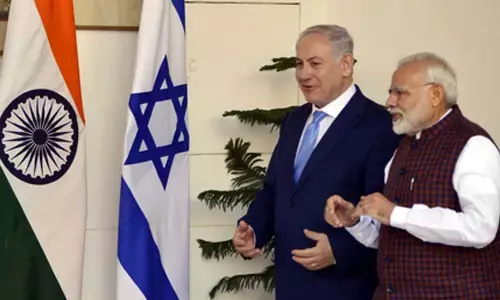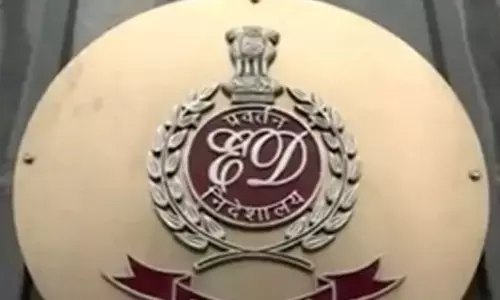Game-changer for mental health care services

Representational Image
The announcement of the tele mental health programme, in the 2022 Union Budget to support people who have been facing deteriorating mental health, especially amid the pandemic is a shot in the arm for the mental health care scenario in the country.
The announcement of the tele mental health programme, in the 2022 Union Budget to support people who have been facing deteriorating mental health, especially amid the pandemic is a shot in the arm for the mental health care scenario in the country.
When it comes to their physical health, people are conscious – they have access to a lot more things to maintain their health, they know everything about super foods, the latest diet trends or workouts, but when it comes to mental health, the awareness just is not there. So many people are not even aware that they may be suffering from mental health issues.
Besides, poor awareness about symptoms of mental illness, myths and stigma related to it, lack of knowledge on the treatment availability and potential benefits of seeking treatment have been the impeding factors for people to seek professional help for mental health issues when they are in need.
Even among the urban population mental health issues are still not accorded adequate importance. A very few seek help when they need it. The situation is rural areas is abysmal. Statistics show the grim reality.
The National Mental Health Survey conducted by NIMHANS in 2016 found that close to 14 per cent of India's population required active mental health interventions. The Survey reported that nearly 70-80 per cent of those with mental illness in India received no treatment. The Survey also estimated that only one out of 10 people with mental health disorders received evidence-based treatments in India.
The WHO predicts that by end of this year roughly 20 per cent of India will suffer from mental illnesses. According to the WHO, 5.6 crore Indians suffer from depression and another 3.8 crore suffer from anxiety disorders. WHO estimates that, in India, the economic loss, due to mental health conditions, between 2012-2030, is 1.03 trillion dollars (at 2010 dollar rate).
In October 2021, a study in Lancet reported a 35 per cent increase in mental health problems in India. According to 'The Global Burden Of Disease Study 1990 – 2017', 19.73 crore people were suffering from various mental disorders in India, that is one in seven Indians. The country saw a two-fold increase in the diseases contributed by mental disorders – the total disease burden in India increased from 2.5 per cent in 1990 to 4.7 per cent in 2017.
While that being the disease burden, there is a vast treatment gap that exists with regard to mental health in the country. The National Mental Health Survey 2016 found that for common mental health disorders such as depression and anxiety disorders, the treatment gap is as high as 85.2 and 84 per cent, respectively. While for severe mental illnesses and suicidal risk, the gap is still as high as 74 and 80 per cent, respectively.
While the Tele Mental Health Programme would go a long way to destigmatise mental illnesses and take treatment to the patients' doorstep, lack of adequate number of trained mental health professionals like psychiatrists, clinical psychologists, psychiatric social workers and psychiatric nurses is a factor that can derail the programme.
According to a 2021 study by Observer Research Foundation (ORF) there is an abysmal shortage of mental health professionals, especially clinical psychologists, who are the first-level professional contact for people seeking help for mental health related problems. Availability of trained mental health professionals like psychiatrists, clinical psychologists, psychiatric social workers and psychiatric nurses is much below the required standards.
According to the Indian Psychiatric Society there are 9000 psychiatrists in the country with about 700 psychiatrists graduating every year. This works out to be 0.75 psychiatrists per 100,000 people in India. This is far below the recommended level of at least 3 psychiatrists per 100,000 people. Thus, India is currently short of 27,000 psychiatrists based on the current population of country.
Similarly, Ministry of Health and Family Welfare to Lok Sabha in 2018 informed Rajya Sabha that the country has just 898 clinical psychologists against the requirement of 20,250 and mere 1,500 psychiatric nurses against the requirement of 30,000.
According to an article "Cost estimation for the implementation of the Mental Healthcare Act 2017" published in Indian Psychiatric Journal - April 2019, India has 9000 psychiatrists, 2000 psychiatric nurses, 1000 clinical psychologists, and 1000 psychiatric social workers.
If we were to assume India needs three mental health professionals (respectively in each category) per 1,00,000 population, we would need an additional 30,000 psychiatrists, 37,000 psychiatric nurses, 38,000 psychiatric social worker and 38,000 clinical psychologists. As per the calculations based on the number of mental health professionals being trained in various institutions in the country at present, it will take 42 years to meet the requirement for psychiatrists, 74 years for psychiatric nurses, 76 years for the psychiatric social worker, and 76 years for clinical psychologists, for providing care for 130 crore population, provided the population (assuming both general population and mental health human resources) remains constant.
The solution lies in augmenting the existing training facilities and setting up of premier academic institutions and hospitals focused on Mental Health care that can train professionals to reduce the gap.
If these impediments in the sector are addressed, the National-level programme, with National Institute of Mental Health and Neurosciences (NIMHANS) Bangalore as a nodal agency, is going to be a definite "game-changer" for mental health care services in India.
(The writer is a trained Gerontologist based at Hyderabad)














